How Google Removing Right-Side Ads from SERPs Affects Organic SEO was originally published on BruceClay.com, home of expert search engine optimization tips.
Late last week, Google announced that they were dramatically changing the layout of their SERPs by removing right-side ads from the page. At the same time, they added an extra ad to the top of the fold for “highly commercial queries” and three text ads to the bottom of the SERPs. This reduces the number of paid ads for certain types of SERPs from as many as 11 to a maximum of seven.
There has been much speculation on what impact this will have in the PPC world, but what do these changes mean for SEOs who are more concerned with organic rankings?
Should SEOs be changing their tactics in light of the SERP shakeup? Or is it business as usual? There certainly seems to be a general consensus that organic SEO is the loser with all of these changes, but I’m not so sure that that is the case. Let me explain why.

The SERP Is Still Made Up of 10 Blue Links
You might assume that since Google is adding as many as four paid ads to the body of organic SERPs that some organic positions are getting squeezed off the page. This isn’t the case. While organic results are getting pushed down the page slightly (more on this in a bit), the total number of organic results on all SERPs is remaining consistent.
SERP elements like “In The News” boxes, related questions, answer boxes, and blended image search results can cause SERPs to include less than the standard 10 results (usually down to nine), but the new ads above and below the SERPs have not lowered the organic SERP result count any further. The same goes for navigational branded searches, which usually only have six or seven organic results. These numbers have remained consistent despite the removal of the right-side ads and the addition (in some instances) of ads above and below the fold.
So speculation that organic results are being profoundly impacted and somehow severely decreased by this change are not accurate. In so much as the SERP was ever made up of “10 blue links” it still is.
One Fewer Organic Result Above the Fold
The top of fold in Google search results have long been dominated by paid ads. The addition of non-paid SERP enhancements like answer boxes, featured snippets, and most recently, Twitter results continue to push the top organic results down the page.
Google’s most recent change does stand to impact organic results that now contain the fourth paid ad above the fold. These queries, which according to Google are “highly commercial queries,” now have one organic result displaying above the fold instead of two.
Statistics from W3Schools indicate that the most common screen resolution among Internet users is currently 1366 x 768; 35 percent of Internet users have this specific resolution. Here is what the above the fold section of a SERP looked like with three ads for the search query “all inclusive Hawaii trips” for this specific screen resolution:
And the same query, with four ads above the fold:
Essentially, the second organic result is being lost in the second example. The result is partially visible above the fold, but it certainly isn’t legible or as clickable as it was before the change. It should be noted that much of this depends on the number of ad enhancements that are included in the four paid ads above the fold. Results with more enhancements take up a bit more space and in some instances the second result is totally lost because of them.
Here’s another example of a SERP that had a blended image search result included as the second result for “above ground pools”:
And the same query with four ads above the fold:
Here we again see that the second organic result is just about completely lost. There’s no doubt that above-the-fold organic real estate is at a premium following this change. In fact, it has been effectively cut in half with the removal of the second result.
Is SEO Dead (Again)?
While many will go screaming for the exits at this point proclaiming that SEO is dead, I am not so sure that that is the case. While it is true that the above-the-fold organic real estate has been compromised, there’s an incorrect presumption that the average user doesn’t scroll down the SERP, choosing instead to click on whatever results are displayed when the SERP first loads. In fact, there’s reason to believe that the structure of the new desktop SERP may inspire a modified behavior.
The most glaring change in the new SERP is clearly the loss of the right-side ads. Many have remarked that the SERP results looks a bit barren without the sidebar ads included and I would tend to agree. To a certain degree, ad blindness resulted in those results being largely ignored by searchers, which is a big reason why Google pulled the trigger on removing them, but their absence has a very clear effect: bringing focus to the body of the SERP.
This is clearly a very intentional move by Google. Drawing more eyes to the top-of-fold ads should result in them being clicked more.
However, the ancillary effect of this is that the organic space gets additional attention from searchers as well. With no distractions on the right-side, the eyes have no choice but to focus on this space. I imagine this will actually result in higher CTR for organic first page results.
Mobile Is King, Even in the New SERP
One of Google’s goals in changing the SERP and removing the right-side ads is to create a unified search experience for both mobile and desktop searchers.
Indeed, the removal of the right-side ads makes the desktop experience more closely resemble what you get in mobile SERPs. If we assume that desktop searcher behavior will start to mimic mobile searcher behavior, we can anticipate that the below-the-fold results will get more attention from searchers.
Advanced Web Ranking tracks organic click-through rates on SERPs for a large set of queries for both mobile and desktop results:
While first position results are clicked on more often by desktop searchers, mobile searchers click on second to seventh position results more often. This tendency even extends to the second and third page of results, which mobile users are much more likely to navigate to and click on than desktop searchers:
So will this behavior extend to desktop searchers now that the SERP more closely resembles its mobile counterpart? Only time will tell, but there is little doubt that Google’s intent with these recent SERP changes is to influence searcher behavior. Google is attempting to condition searchers to engage with paid ads and eliminate the ad blindness that has historically been a knock on the paid section of SERPs.
If there is one takeaway for organic SEOs, it is to clearly understand Google’s intention; if the query is transactional in nature, Google wants to make sure that users are clicking on ads to complete the process and make their purchase. It helps to justify PPC ad budgets by increasing ROI and protecting Google’s corporate objective of increasing revenue from paid search ads.
Ecommerce SEO Just Got A Little Bit Harder
If there is a “loser” in Google’s recent SERP shake up, it has to be the SEO who works exclusively on ecommerce sites. All of the changes that Google has made effect the queries they spend their time optimizing for, among those changes:
- A fourth ad at the top of the SERP, which allows for
- an increase in paid ad enhancements, which help to draw attention to paid ads while simultaneously
- eliminating 50% of the organic results above the fold and
- removing right-side text ads, which helps to feature Product Listing Ads (PLAs)
This is one crowded SERP and there isn’t a real organic result until well below the fold. This is what the top of fold for this SERP looks like on a 1366 x 768 screen:
So what’s an organic SEO to do? Throw in the towel? Pack up and go home? While winning in the ecommerce space clearly got a little tougher organically, there is still very real opportunity to make a splash.
One could argue that good SEO and top-of-first-page organic placement is going to have even more value in light of these changes. This is especially the case if CPC for paid ads at the top of the page for ultra-competitive head terms skyrockets (as many are speculating it will) – making paid inclusion on the page an option reserved exclusively for businesses with the largest of paid ad budgets.
Organic SEO may be the small-to-medium-sized businesses best option for leveling the playing field and continuing to grab a piece of the pie for the high volume transactional queries that are seeing the most SERP layout flux. Larger brands will be aiming to rank organically to double-down on first page SERP real estate, owning both above-the-fold paid advertisements and top 10 organic rankings – a result that can exponentially increase conversion rates.
And that’s to say nothing of the opportunities to target longer tail queries …
Long-Tail Optimization For The Win!
While highly competitive head terms are becoming more competitive than ever, the longer-tail queries still offer excellent opportunities for optimization. Long-tail queries are the organic SEO’s best friend; they are less competitive than head terms, but offer a much higher conversion rate.
A small tweak to our ultra-competitive head term “running shoes” to “discount running shoes” reveals a much different SERP:
By tweaking our target keyword, we’ve retrieved two extra organic results above the fold. Another tweak, this time adding a specific brand to the query, results in a SERP with even more organic real estate to take advantage of – “Nike discount running shoes”:
Conclusion
While it is too early to gauge the true effect of Google’s recent SERP layout changes, it is important for organic SEOs to remain calm and base their recommendations on the data available to them. As I have illustrated in this blog post, the net effect of the recent changes is negligible, and there’s reason to believe that ultimately, the changes may benefit organic SEO click-through rates.
It is also extremely important that SEOs, especially those in the ecommerce space, continue to identify and optimize for less competitive longer-tail queries and not fall into the trap of chasing head-term rankings that may increase traffic, but have a negligible impact on conversion rates.
Whether it’s the search algorithm or the SERPs themselves, the dynamic nature of our industry is what makes it such a challenge and what makes achieving great results so rewarding. The one absolute in organic SEO is change.

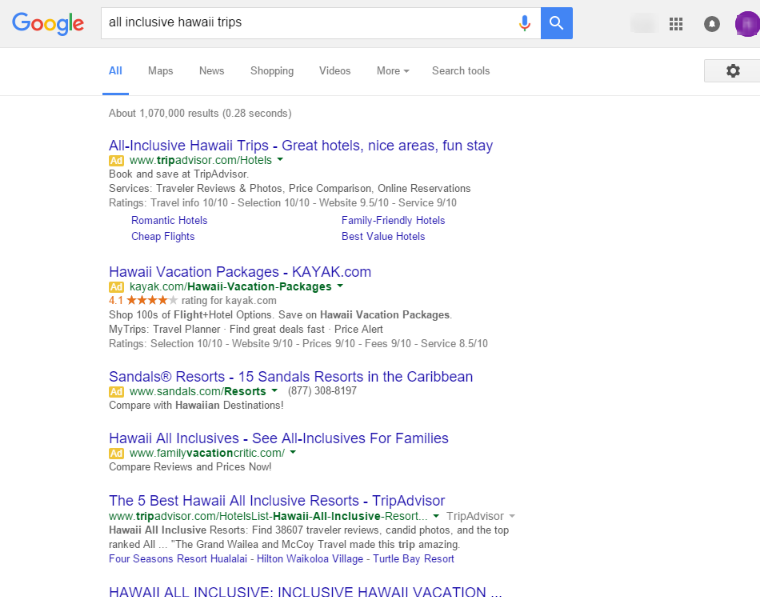
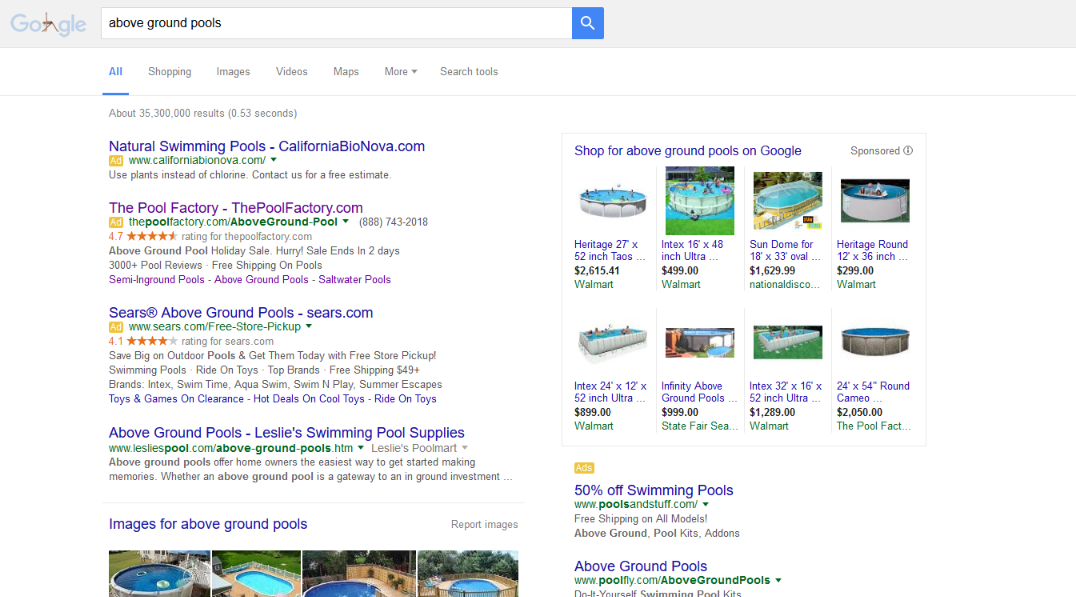
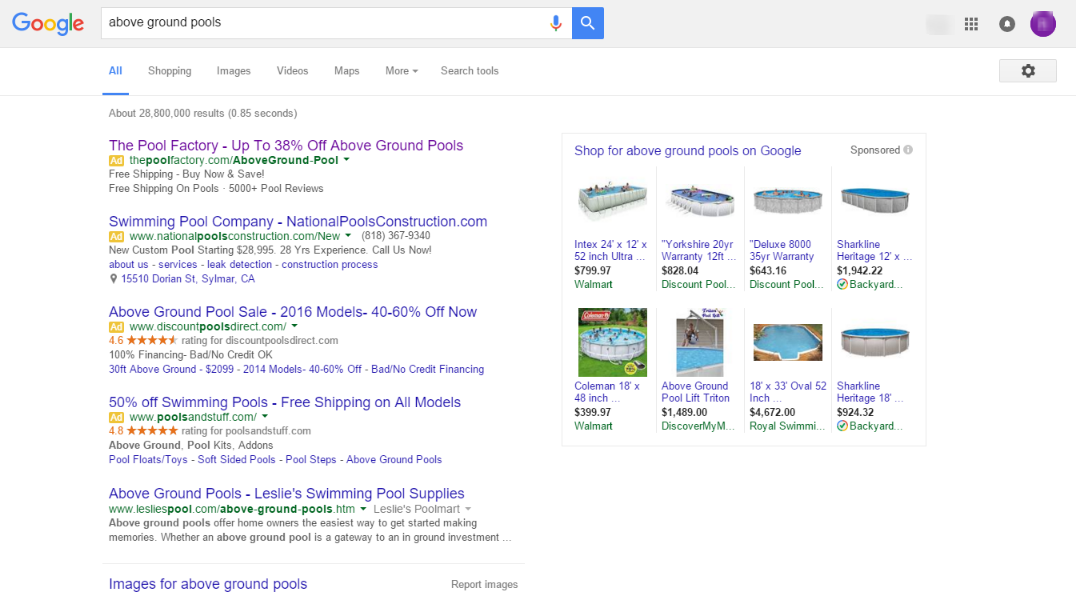
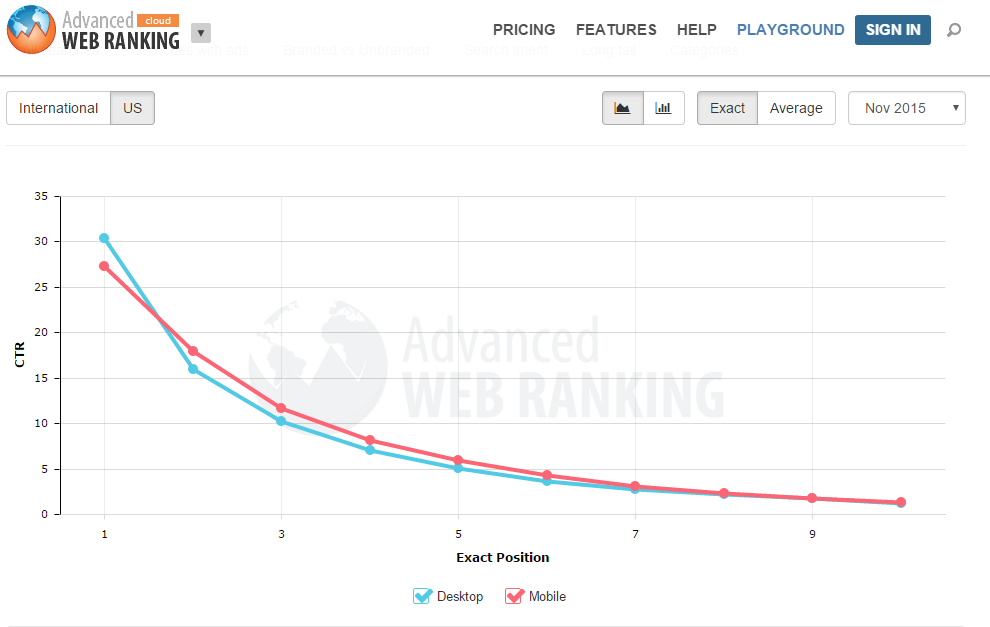
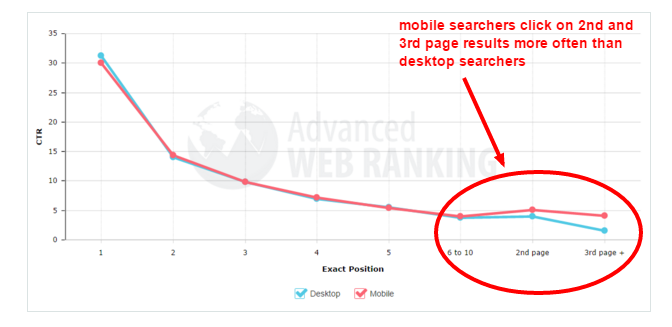

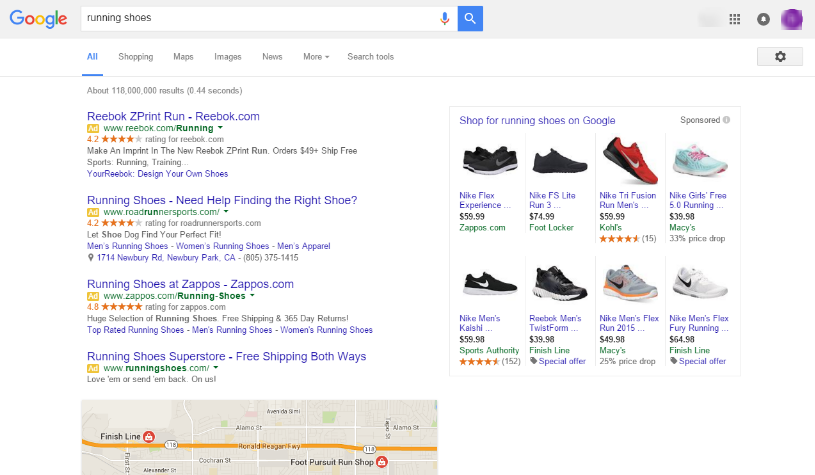

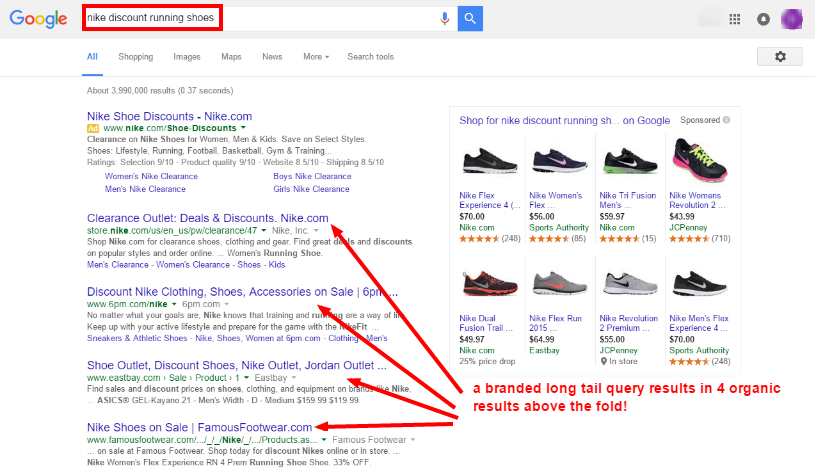
No comments:
Post a Comment